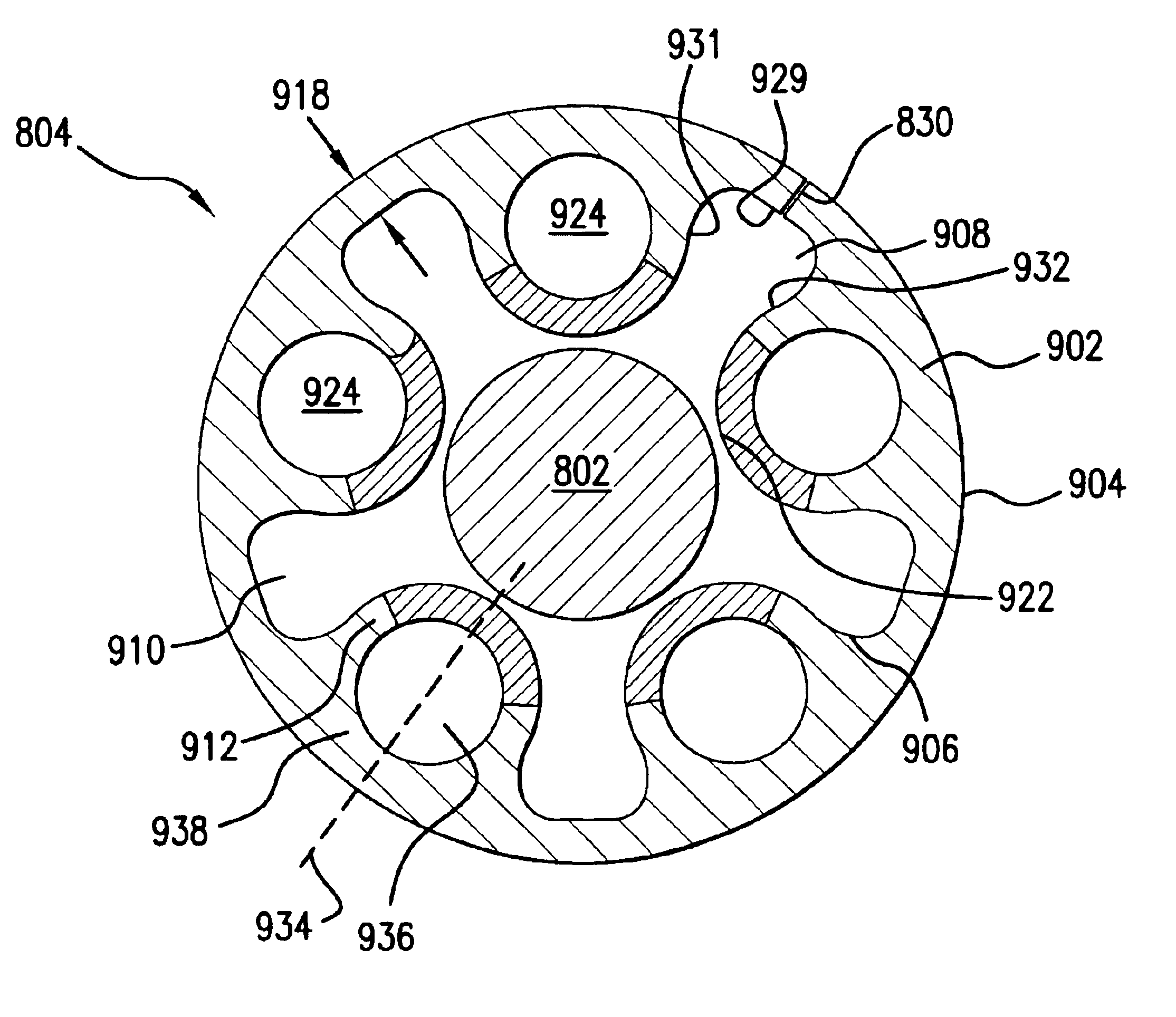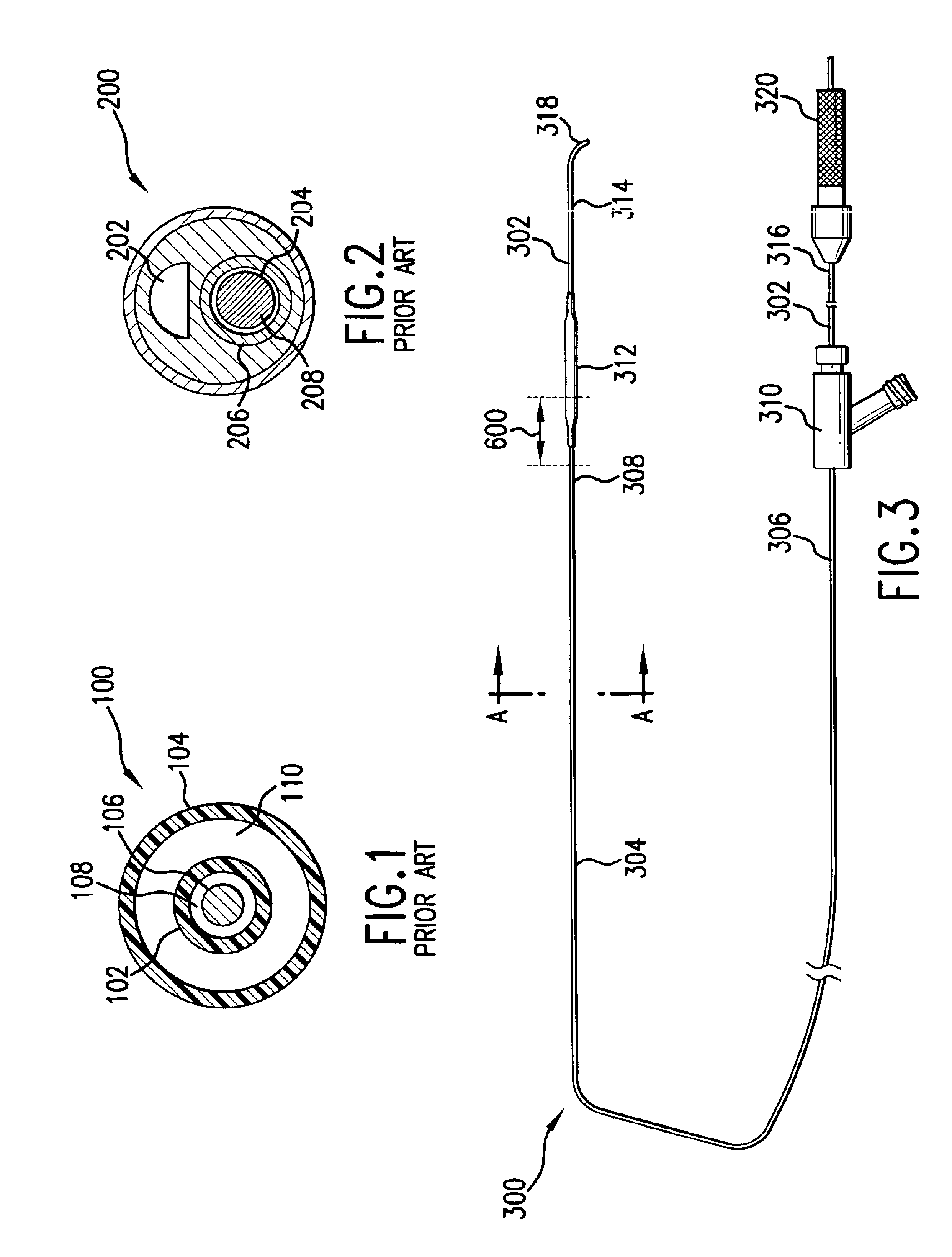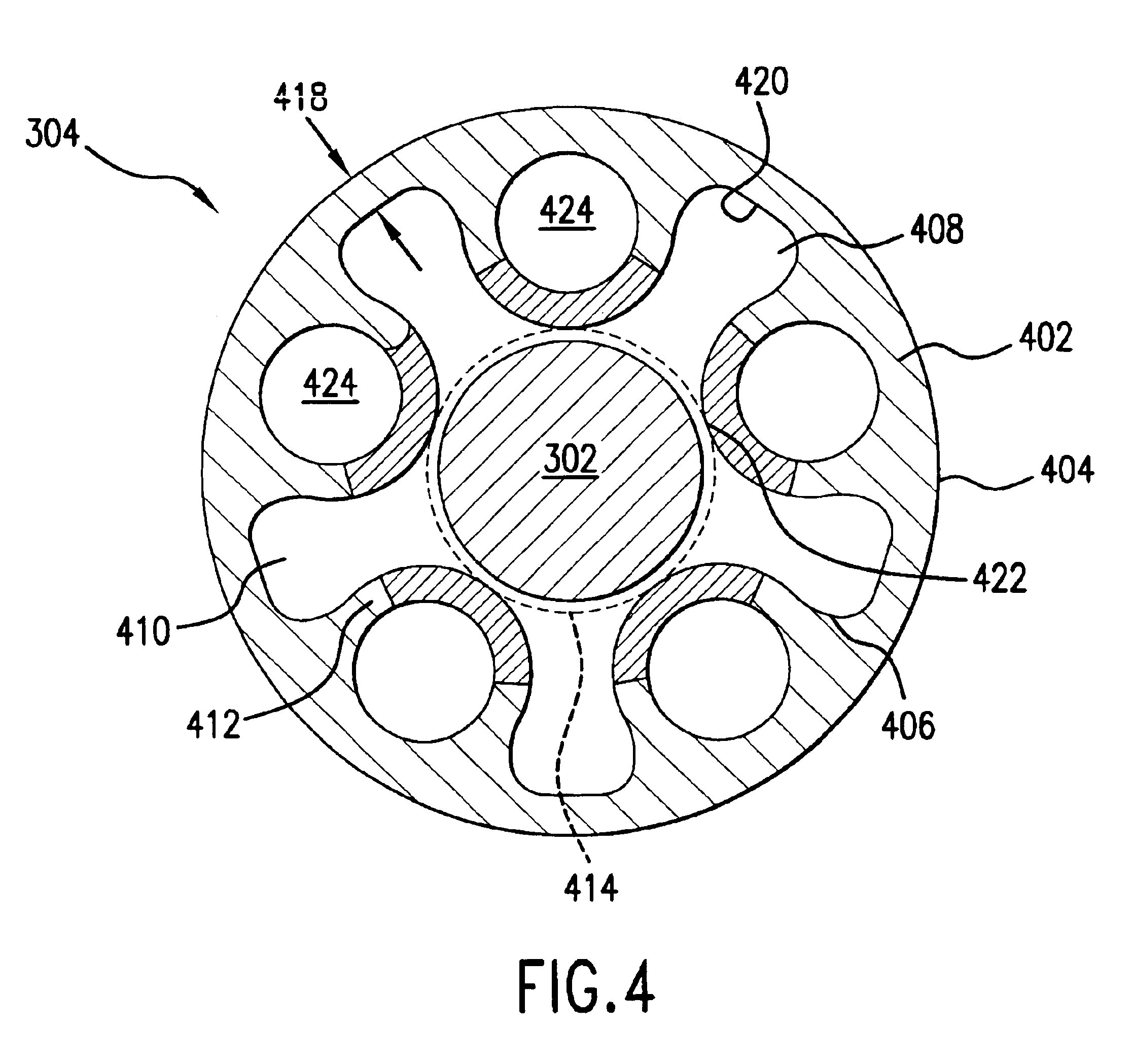Catheter having a low-friction guidewire lumen and method of manufacture
a low-friction, guidewire technology, applied in the field of medical devices, can solve the problems of increasing the difficulty of balloon accessing the stenosis site, affecting the proper placement of the catheter, and the tendency of the catheter to collapse or buckle axially, so as to improve the trackability over the guidewire
- Summary
- Abstract
- Description
- Claims
- Application Information
AI Technical Summary
Benefits of technology
Problems solved by technology
Method used
Image
Examples
Embodiment Construction
[0050]The preferred embodiments of the present invention are now described with reference to the figures where like reference numbers indicate identical or functionally similar elements. While specific materials and method steps are discussed, it should be understood that this is done for illustrative purposes only. A person skilled in the relevant art will recognize that other materials or method steps can be used.
[0051]Referring first to FIG. 3, an embodiment of a dilatation catheter 300 and a guidewire 302 are shown. Dilatation or balloon catheter 300 includes a catheter shaft 304 having a proximal end 306 and a distal end 308. Proximal end 306 of catheter shaft 304 is secured to a luer hub 310. Distal end 308 of catheter shaft 304 is attached to a dilatation balloon 312. An interior of balloon 312 is in fluid communication with an external source of inflation fluid through the length of catheter shaft 304.
[0052]Balloon 312 is formed of a thin, pliable material capable of expandi...
PUM
 Login to View More
Login to View More Abstract
Description
Claims
Application Information
 Login to View More
Login to View More - R&D
- Intellectual Property
- Life Sciences
- Materials
- Tech Scout
- Unparalleled Data Quality
- Higher Quality Content
- 60% Fewer Hallucinations
Browse by: Latest US Patents, China's latest patents, Technical Efficacy Thesaurus, Application Domain, Technology Topic, Popular Technical Reports.
© 2025 PatSnap. All rights reserved.Legal|Privacy policy|Modern Slavery Act Transparency Statement|Sitemap|About US| Contact US: help@patsnap.com



